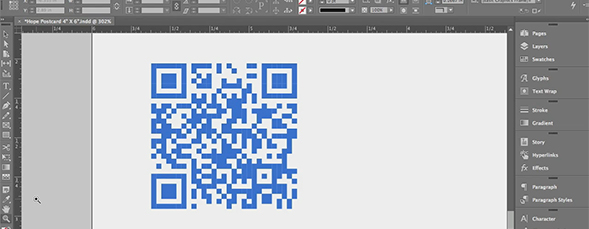What other aspects are important in connection with printing QR Codes? Apart from the relevant file format, further aspects need to be considered.


In general, the print size should be determined in relation to the number of characters encoded. If rather much content is encoded, accordingly more space is required. A size of approximately 2 x 2 cm should be sufficient in most cases. Better avoid uneven surfaces.
Wrinkles on leaflets and flyers might also impact the Codes’ legibility in a negative way. How can I use QR codes successfully? Put yourself in the shoes of your target audience and ask yourself whether you would scan the Code you’re looking.
Are you excited about what the Code might reveal? Do you expect value or helpful information from it? Users put effort into interacting with your advertisement and expect something in return for that. Ideally present your content using a mobile website that is adapted to the respective display size and makes it more comfortable for users to navigate through it. Provide value added content and make your Code attract people by making use of the various customization options. A simple call to action like 'Scan this Code to find out more' has also proven successful and will surely encourage more people to see what’s behind the Code. History of QR Codes As early as 1994 people took advantage of the QR Code’s practical features: Denso Wave, a Japanese subsidary of the Toyota supplier Denso, developed them for marking components in order to accellerate logistic processes for their automobile production.
In their country of origin the use of QR Codes is so well established that even the Japanese Immigration Office put them on their residence permits. In the meantime, QR Codes found their way to Europe over the past couple of years and are internationally standardized now. Get Graphics Card Info Vista more. Wifi Brute Force Wpa2 Software Latihan Toefl Gratis. there.
What makes QR Codes particularly advantageous is that up to 30 percent of their surface may be damaged, dirty or altered in other ways without effecting their legibility and functionality at all. Application possibilities of QR Codes The conceivable applications are almost infinite. Especially when encoding URLs many different contents are possible. These include homepages, product sites, videos, picture galleries, coupon codes, competitions, contact forms or any other types of online forms, social media sites and so on. Many other contents do not even require an active internet connection of the used phone. Those are e.g. Calendar events, WiFi connections or vCards that contain personal contact information which then can easily be added to the address book.
Plus, share text between InDesign and Adobe Illustrator CC libraries. Font filtering. At any point, you can edit the QR code directly within InDesign. Generate QR codes to link your artwork to websites, documents, and more. Today I present you a free java script which allows generating QR code in Illustrator. This script was designed by Kazuhiko Arase.
QR Codes may be placed on web pages, print ads, products or any other flat surfaces.